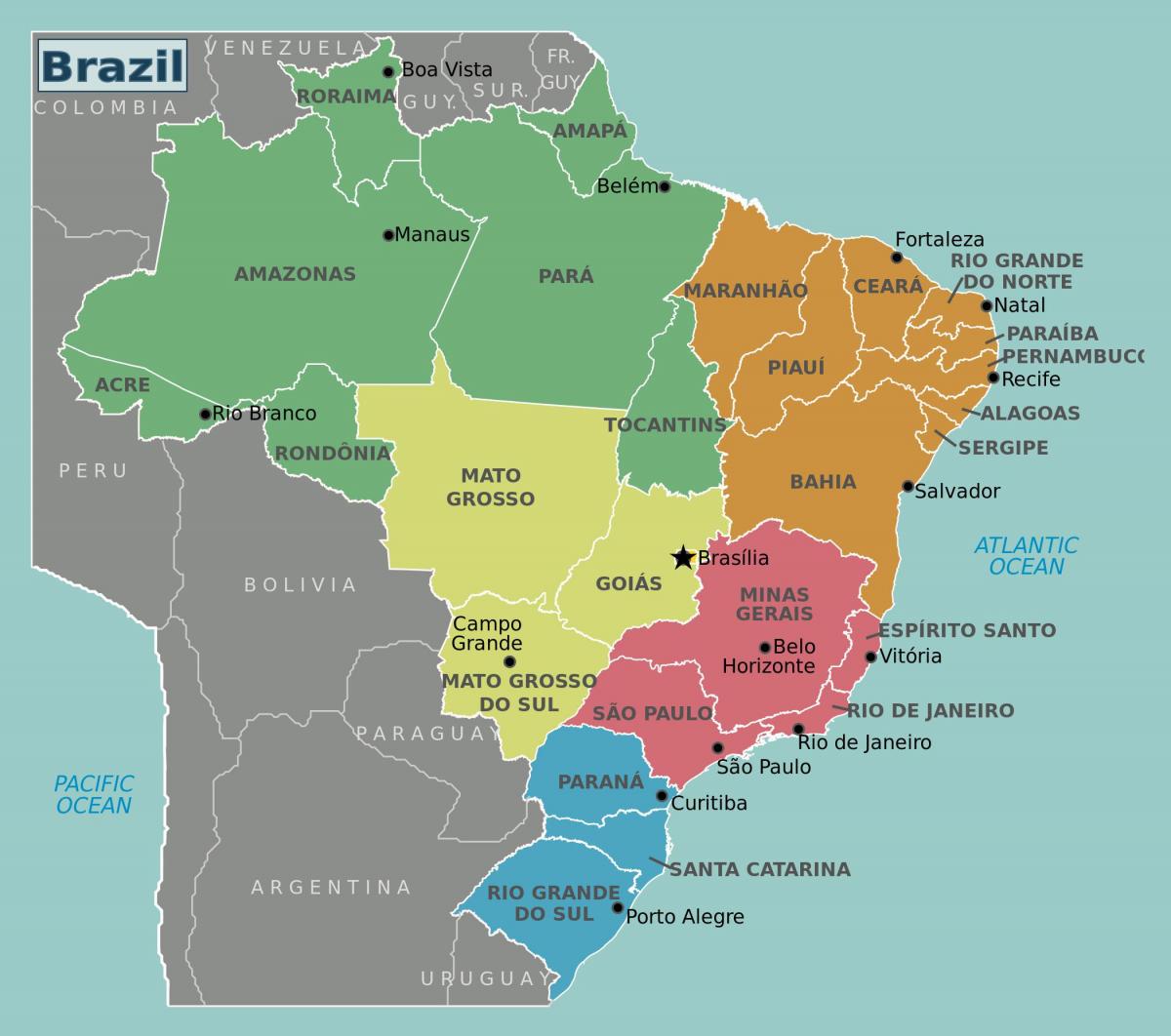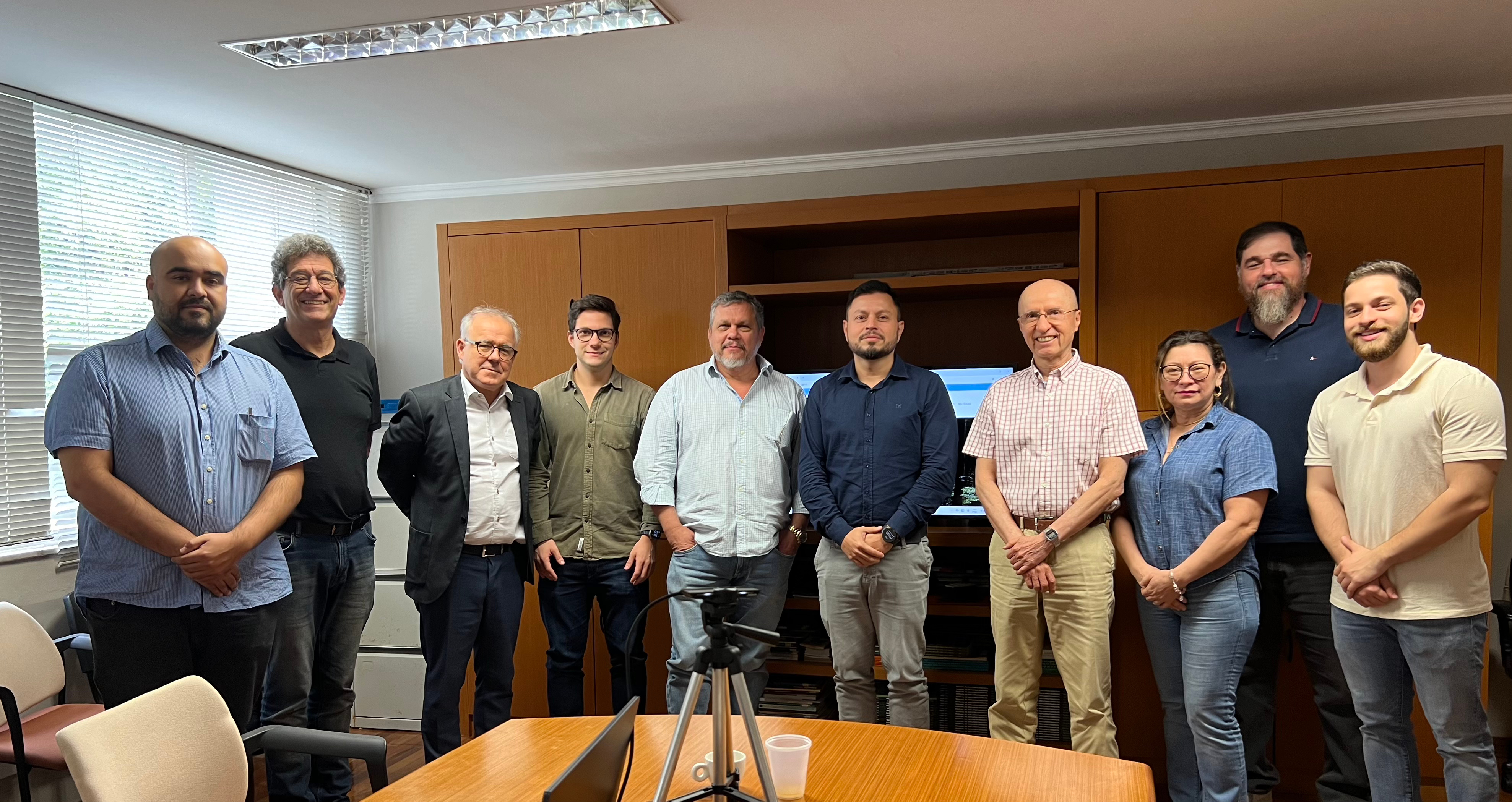

20.12.2024
A mission by Benoit Jobbé-Duval, Director of the ATIBT, took place in Brazil from 20 November to 8 December 2024.
The main aim of the mission was to strengthen links with local players, meet a number of institutions and prepare for the ATIBT's possible participation in COP 30 in Belém.
One of the key aspects of this mission was the collaboration with Jeanicolau Simone de Lacerda (JSL), an ATIBT member and ATIBT relay in Brazil. Several meetings were held in São Paulo, Manaus and Belém, revealing the wide disparities in the sustainable management of forests and sawmills in the various Amazon states.


A diversity of forest management in different states.
The forest management situation varies considerably from one state to another:
Mato Grosso: It accounts for 45% of the country's tropical timber production, with a predominance of agricultural and forestry projects, but little interest in certification and low applicability of the EUDR.
Pará: This accounts for 25% of the SFM area, with FSC certification more common and PEFC gaining in importance, particularly because of the IFLs, a real concern for certified sustainably managed forests in Amazonia. The EUDR would be easier to implement here, except for non-certified companies.
Amazonas: There are very few production areas here, with Mil Madeiras being the exception that works in own areas and private concessions, representing Brazil's largest GDF project. In south of Amazonas also there are timber production in public concessions and in private areas, This Amazonas regions has some conflict areas.
Rondônia, Acre and Amapá: These states each account for around 10% of the surface area of managed forests, with some conflicts areas. There are federal concession areas and a mix of certified and non-certified projects.
It should be noted that federal public concessions are managed by the Brazilian Forest Service (SFB), which has an exclusive SFM certification system (SCC). In Rodonia also is launched by the Federal Government the first degraded forest restoration concession, that has compensation based on Carbon Credits
A detailed map of certified forestry companies and a map of market players is available to ATIBT members.

Overall, the Brazilian context is favourable to sustainable management certification (FSC or PEFC), which should continue over the next few years.
Brazil benefits from a number of factors that facilitate access to certification, such as good standards, quality forestry schools, a high level of motivation among graduates, fairly solid governance and a well-developed infrastructure, although this remains heterogeneous. In addition, housing for workers is generally located in towns rather than within the concessions, which makes it easier to deal with housing issues within the concessions.
Various public bodies are responsible for Brazil’s environmental and forestry policy, principally IBAMA and the SFB, being that each state has their own environmental secretary that also controls licensing etc .
IBAMA, the Brazilian Institute for the Environment and Renewable Natural Resources (Instituto Brasileiro do Meio Ambiente e dos Recursos Naturais Renováveis) is a federal authority under the Ministry of the Environment and Climate Change.
As the executive body responsible for implementing national environmental policy, IBAMA carries out various activities aimed at preserving and conserving Brazil’s natural heritage. Its responsibilities include monitoring and regulating the use of natural resources, such as water, flora, fauna, and soil. Additionally, IBAMA oversees the issuance of environmental licenses and regulates the timber trade. So, they are responsible for granting environmental licenses and control the timber commerce.
Some Brazilian states have similar agencies with complete oversight of Sustainable Forest Management (SFM) activities, such as Pará and Mato Grosso. Others, however, only regulate SFM licensing and operations up to a specific area threshold.”
The Brazilian Forest Service (SFB) is playing an increasingly important role in Brazil.
A federal agency created in 2006 to promote and control sustainable economic activities in public forests granted to private and civil entities, the Brazilian Forest Service (SFB) came into being with the publication of Law 11.284/2006, article 54 of which attached it to the Ministry of the Environment. In 2019, Law 13.844/2019 transferred it to the Ministry of Agriculture, Livestock and Supply.
The agency is responsible for managing the national public forestry system, promoting sustainable forestry and other activities through temporary forest management concessions granted to private entities. Its functions also include the application of Brazilian forestry legislation, in particular the Rural Environmental Register (CAR). Compulsory electronic registration through self-declaration is the first step towards the environmental regularization of rural properties.
The Chico Mendes Institute for Biodiversity Conservation (ICMBio) is the Brazilian environmental agency responsible for proposing, implementing, managing, and protecting federal conservation units. They also are responsible for managing SFM concessions for civil entities, like cooperatives local associations etc
Many meetings were held with the private sector.
IBA (São Paulo), a powerful union of pulp and paper and reconstituted wood producers, based on eucalyptus and pinus supply, heavily involved in FSC and PEFC certification.
This organization is actively supporting the development of a new forest business sector in Brazil—native species plantations for both carbon credits and timber, with business models targeting plantations of 50,000 to 1,000,000 hectares. Major international companies and banks are investing in this sector, and companies such as Symbiosis, TTG, Momback, Systemica, Biomas and Re.Green are major players.
 Meeting with AIMEX
Meeting with AIMEX
AIMEX (Belém). The Association of Wood Exporting Industries of the State of Pará (AIMEX) was founded on 23 June 1981 to act as an interface between public bodies and exporting companies.
The association currently has 23 member companies.
The association's commitments include (1) encouraging sustainable logging, so that the sector becomes a vehicle for sustainable economic development, (2) linking the conservation of plant cover and the benefits derived from it to the creation of jobs and income, (3) trade in tropical timber, (4) promoting the timber species of the State of Pará and defending the interests of the forestry sector in public and private policies.
Deryck Martins is Chairman of the Board and Guilherme Carvalho is ATIBT's representative on AIMEX.
CONFLORESTA (Belém) This organization represents a new generation of concessionaires producing sustainable timber. It has 11 associated forest concessionaires and over 7,000 direct and indirect jobs in Pará and Rondônia.
Executive Director: Daniel Bentes
MIL MADEIRAS, a sustainable and innovative business model in Brazil.
The company, which belongs to Precious Woods, is close to the small town of Itacoatiara, in the state of Amazonas. The company is both FSC and PEFC certified, and has implemented a number of innovations, including cable skidding, an exemplary technique that minimizes the impact on the soil. This innovative process reduces disturbance to ecosystems while ensuring efficient logging.
In addition, the company has put in place a system for the full recovery of wood residues: nothing goes to waste, all wood residues are used to power a cogeneration plant, resulting in the production of renewable energy, reducing the carbon footprint and maximising the sustainable use of forest resources.

More than in other countries, Brazil's certified forest concessionaires are a bulwark against deforestation. This satellite photo of the Mil Madeiras concession, near the city of Manaus, illustrates this situation.
Conclusion
This mission to Brazil provided an opportunity to gain a better understanding of the complexity of the Brazilian forestry sector, to establish key contacts, and to prepare the next steps for the ATIBT, particularly with a view to COP 30.
Of course, not all of ATIBT's potential partners could be met during this mission, such as IMAFLORA, with whom discussions on the IFL issue are continuing, in the run-up to the FSC AGM to be held in Panama from October 26 to 31, 2025. Indeed, among the major challenges is the need to increase the area of certified forests, particularly in states such as Mato Grosso and Pará.
Joint work with the Brazilian private and public sectors also needs to be stepped up to work jointly on CITES-related issues, and to make trade in Appendix 2-listed species more fluid, since the aim of Appendix 2 listings is not to block trade.
Understanding the EU RD, which will come into force at the end of 2025, is also an issue for the Brazilian forestry sector, and exchanges will continue with the ATIBT over the coming months to facilitate understanding of the new regulation.
Finally, investment in the forestry sector is still too low in Brazil. We may need to help change BNDES's (Brazilian Development Bank) perception of the natural forest, which is currently seen as a burden rather than an asset, a major obstacle to accessing the government funding that theoretically already exists for SFM.
Advocacy in this direction should be possible.